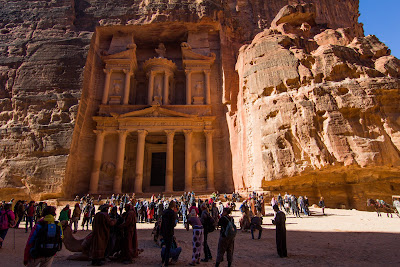 |
| Enjoying the sunset view from Amman's Citadel |
Fitting with the good, bad, and ugly theme meant not describing the trip in chronological order. Among the countries visited, Jordan – which we visited between Egypt and Israel-Palestine – left us with the most positive impression and one I recommend going. The people there are friendly and hospitable, while it is reasonably safe for women with far less harassment than in Egypt. Speaking of safety, Jordan defies the stereotype of the Middle East being a conflict zone with it being a safe haven for millions of refugees from Palestine, Syria, and Iraq. If there is one weakness about Jordan, it can be an expensive place to visit; especially in Wadi Musa (Petra) and the fact one Jordanian Dinar (JOD) costs almost $2 Canadian.
 |
| You will need almost $2 Canadian for one Jordanian Dinar |
Jerash and Amman
 |
| Some of the well preserved ruins in Jerash |
 |
| The Umayyad Mosque at Amman's Citadel |
Amman to Petra
 |
| Madaba has a lot of mosaics such as this one at its Archaeological Park |
 |
| Dana Village and the nearby Biosphere Reserve |
Petra
 |
| The Treasury may be Petra's main draw, but it's really about the hikes |
Wadi Rum
 |
| Helen walking barefoot on a sand dune in Wadi Rum |
 |
| This chicken and vegetable dinner was cooked in an underground pit |
For the mean time, you can see some more pictures from Jordan here.
Hospitably yours,
Rob Z (e-mail)
No comments:
Post a Comment